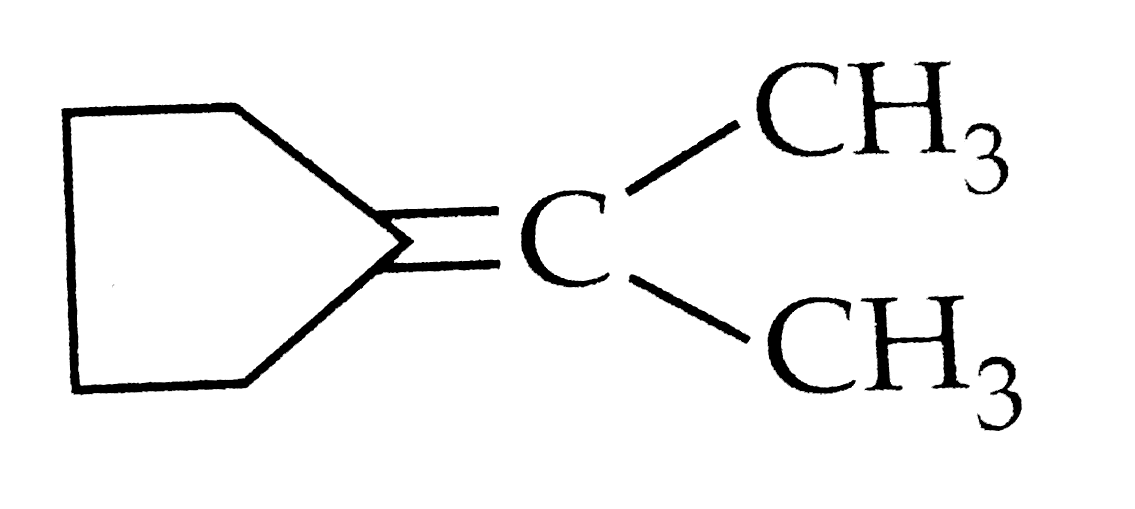An alkene ‘A’ on ozonolysis gives a mixture of ethanal and pentan-3-one. Write structure and IUPAC name of ‘A’.
The correct Answer is:3-Ethylpent-2-ene
To solve the problem, we need to determine the structure and IUPAC name of the alkene ‘A’ that upon ozonolysis yields a mixture of ethanal and pentan-3-one.
Step 1: Understand Ozonolysis
Ozonolysis is a reaction where ozone (O₃) reacts with alkenes or alkynes, leading to the formation of carbonyl compounds (aldehydes or ketones). In this case, we are given that the products are ethanal (an aldehyde) and pentan-3-one (a ketone).
Step 2: Analyze the Products
The products of ozonolysis are:
- Ethanal (CH₃CHO)
- Pentan-3-one (C₅H₁₀O)
This indicates that the alkene must have a structure that, when cleaved, can yield these two products.
Step 3: Determine the Structure of Alkene ‘A’
To produce ethanal and pentan-3-one, we can deduce that the alkene must have a structure that allows for the formation of a 5-carbon chain (for pentan-3-one) and a 2-carbon chain (for ethanal) upon cleavage.
Let’s assume the structure of alkene ‘A’ is:
- A 5-carbon chain with a double bond, specifically at the 2-position.
Thus, the structure can be represented as:
- 3-Ethylpent-2-ene
Step 4: Draw the Structure
The structure of 3-ethylpent-2-ene can be drawn as follows:
CH3∣CH3−CH−CH=CH−CH2−CH3
This structure shows a double bond between the second and third carbon atoms, with an ethyl group on the third carbon.
Step 5: Write the IUPAC Name
The IUPAC name of the compound is derived from its structure:
- The longest carbon chain has 5 carbons (pentane).
- The double bond is located at the second carbon (2-ene).
- There is an ethyl group on the third carbon (3-ethyl).
Thus, the IUPAC name of alkene ‘A’ is 3-ethylpent-2-ene.
Final Answer:
- Structure of ‘A’: 3-Ethylpent-2-ene
- IUPAC Name: 3-ethylpent-2-ene
Ozonolysis is a reaction where ozone (O₃) reacts with alkenes or alkynes, leading to the formation of carbonyl compounds (aldehydes or ketones). In this case, we are given that the products are ethanal (an aldehyde) and pentan-3-one (a ketone).
The products of ozonolysis are:
- Ethanal (CH₃CHO)
- Pentan-3-one (C₅H₁₀O)
To produce ethanal and pentan-3-one, we can deduce that the alkene must have a structure that allows for the formation of a 5-carbon chain (for pentan-3-one) and a 2-carbon chain (for ethanal) upon cleavage.
- A 5-carbon chain with a double bond, specifically at the 2-position.
- 3-Ethylpent-2-ene
The structure of 3-ethylpent-2-ene can be drawn as follows:
The IUPAC name of the compound is derived from its structure:
- The longest carbon chain has 5 carbons (pentane).
- The double bond is located at the second carbon (2-ene).
- There is an ethyl group on the third carbon (3-ethyl).
- Structure of ‘A’: 3-Ethylpent-2-ene
- IUPAC Name: 3-ethylpent-2-ene
Topper's Solved these Questions
Similar Questions
Knowledge Check
Which of the following alkenes on ozonolysis gives a mixture of ketones only?
ACH3−CH=CH−CH3BCH3−C∣CH3−CH=CH2C DH2C=CH2
DH2C=CH2
Which of the following alkenes on ozonolysis give a mixture of ketones only?
View SolutionC12H10 is an aromatic compound which on ozonolysis gives mixture of Glyoxal and 2-Oxopropanedial in ratio 3:2 it structure can be :
View SolutionOne mole of alkene an ozonolysis gives two moles of butanone. The alkene is :
View SolutionAn unsaturated hydrocarbon 'A' adds two molecules of H2 and on reductive ozonolysis gives butane-1, 4-dial, ethanal and propanone. Give the structure of 'A' , write its IUPAC name and explain the reactions involved.
View SolutionAn alkene (A) ozonolysis gives a mixture of two carbonyl compounds. Mixture on Clemmensen reduction gives just one alkane (B). (B) is the lowest alkane which in pure form can not be prepared by standard Wurtz method. (A) is
View SolutionThe reductive ozonolysis of an alkene gives a mixture of acetone and formaldehyde. What is the structural formula of the alkene?
View SolutionName an alkene which on reductive ozonolysis gives only acetone.
View Solution
